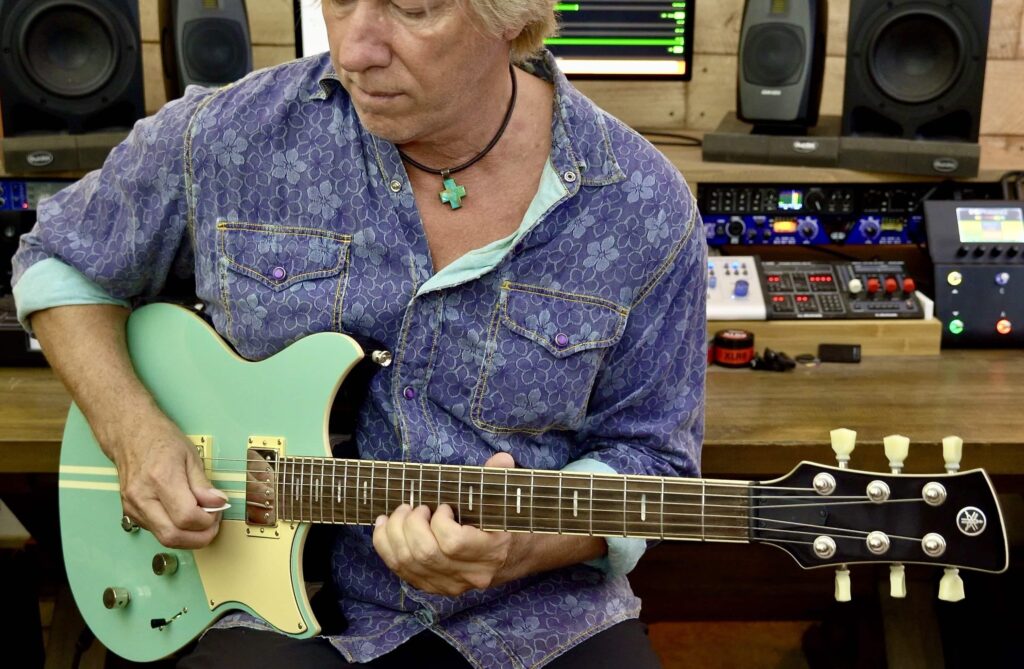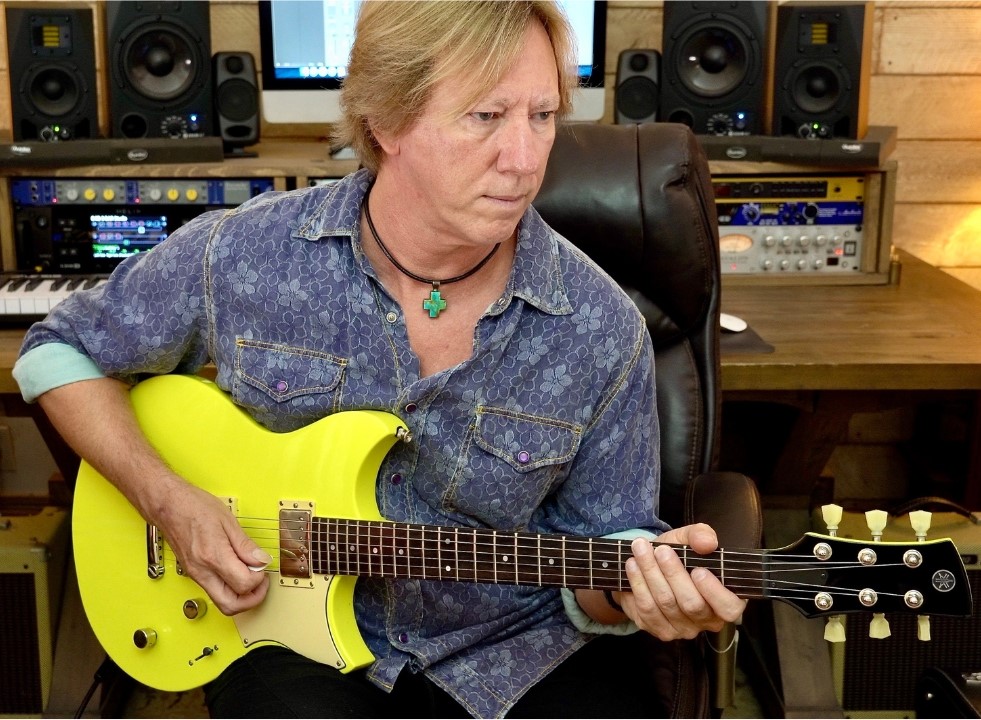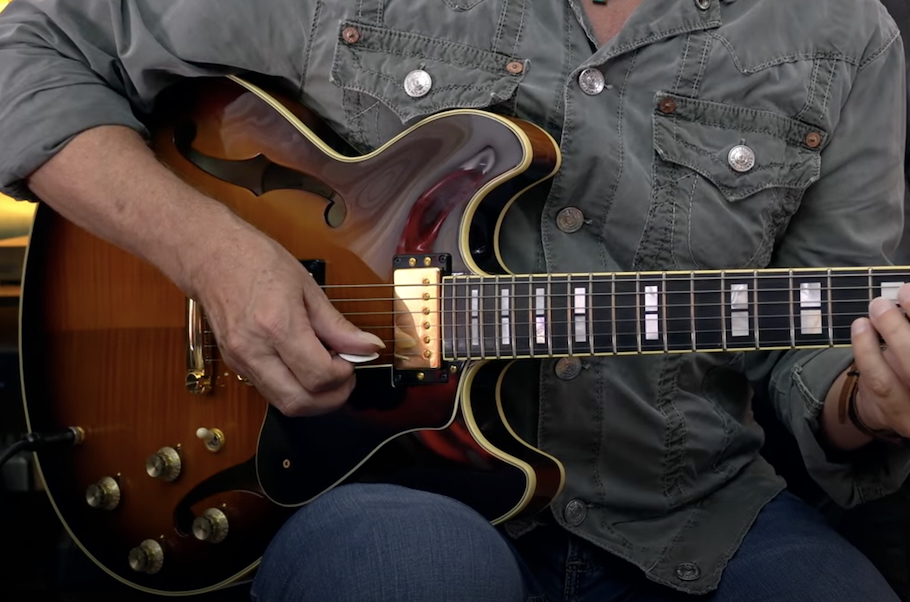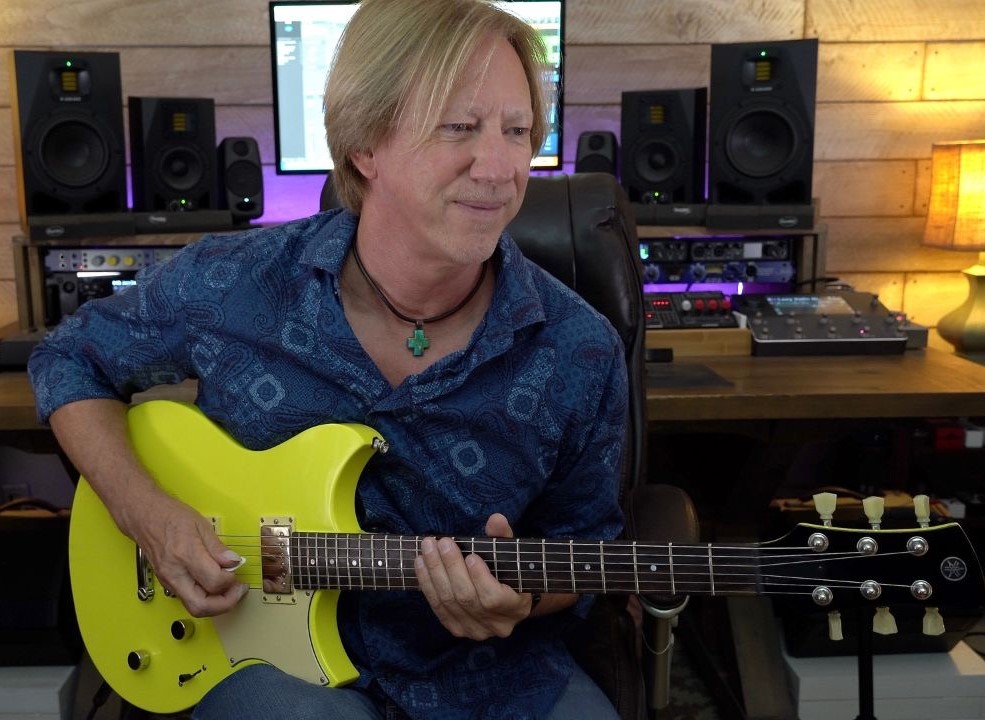Constructing Basic Guitar Chords, Part 2
Enhancing harmonic flavorings by adding chord extensions.
In Part 1 of this two-part series, we showed you how to build the four main triad chord types and add the seventh degree to create major, minor and dominant seventh chords.
We can further enhance the harmonic flavor of these chords by adding what are known as chord extensions. The three chord extensions are as follows:
- Second or ninth (A ninth is a second up an octave)
- Fourth or eleventh (An eleventh is a fourth up an octave)
- Sixth or thirteenth (A thirteenth is a sixth up an octave)
Technically, ninths, elevenths and thirteenths should only be denoted when the seventh is present in the chord. However, musicians often use those terms regardless of the seventh.
It’s important to understand that adding an extension doesn’t change the harmonic structure (that is the “quality”) of a chord in terms of whether it’s major, minor or dominant. That’s why adding an extension to any of those chords doesn’t change their function within a chord progression — it merely adds more complexity to the flavor.
Major and Minor Extensions

Seconds
A G major triad with a second added (in this case, the note A) is called G(add2), although musicians often refer to it as G(add9). Adding the major second to a major triad creates a sweeter, more contemporary sound.
You can change this to a G minor triad by lowering the third and adding the second. This is called Gmi(add2), though, again, musicians often refer to it as Gmi9. Using the correct names will raise your grades when taking written theory exams … but more importantly, it’s good practice for sharing information with other musicians.
Fourths
Generally speaking, adding an extension of a fourth to a triad will create a suspended fourth chord, called a sus4. The name comes from the fact that the fourth is preventing the third from resolving — in other words, “suspending” its resolution. Suspended chords often resolve back to the third, creating a consonant tension before resolution.
The G major triad with the fourth suspending the major third is called G(sus4). The G minor triad with the fourth suspending the minor third is called Gmi(sus4). It is also possible to add a fourth to a full major triad without it suspending or replacing the third. This is called an add4 chord. These chords can be hard to construct on the fretboard, but the illustration above shows a Dadd4 voicing that’s pretty easy. Try it, so you can hear how cool it sounds.
Sixths
Adding the sixth (E) to Gma will result in a major sixth chord, called G6.
Adding the sixth (E) to Gmi will result in a minor sixth chord, called Gmi6
As a matter of interest, the G6 chord is enharmonic as Emi7 (in other words, it contains the same tones as Emi7). However, how the chord is perceived will depend on the context and which of the two notes is in the bass.
Seventh Chord Extensions
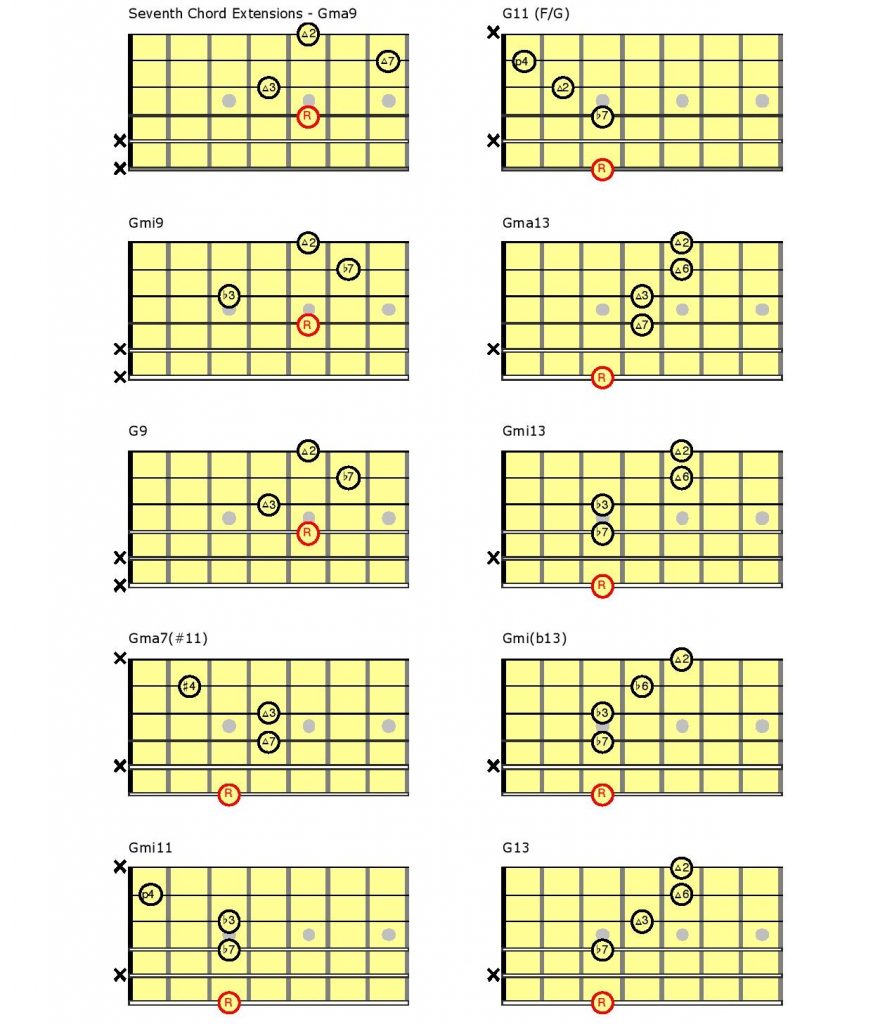
Once you have the seventh present in chords, you can designate second, fourth and sixth extensions as ninths, elevenths and thirteenths:
Ninths
The Gma7 chord with the ninth (A) added is called Gma9.
The Gmi7 chord with the ninth (A) added is called Gmi9.
The G7 chord with the ninth (A) added is called G9.
The diagrams above depict all three of these chords with the ninth above the seventh in pitch. Theoretically, the ninth should always be voiced this way; however, this is not always practical, so other voicings can be substituted.
Sevenths and Suspended Fourths
If you add the fourth to major, minor or dominant seventh chords, these are still referred to as suspended fourths, regardless of the seventh being present in the chord. (Hey, I don’t make up the rules, I just explain them.) Adding the fourth to a seventh chord can still create a suspension if you place it in front of the third. So Gma7(sus4), Gmi7(sus4) and G7(sus4) are all typical chords in modern harmony.
Elevenths
An eleventh added to a major seventh chord will either be a perfect eleventh (if added to the I major chord) or a naturally occurring sharp eleventh (if added to the IV major seventh chord). The perfect eleventh will sound extremely dissonant and is generally raised a half-step to a sharp fourth in jazz compositions.
The Gma7 chord with the eleventh (C) added is called Gma11.
The Gma7 chord with the sharp eleventh (C#) added is called Gma7(#11).
The Gmi7 chord with the eleventh (C) added is called Gmi11.
An Fma triad with the G in the bass is called G11(dominant 11th). Because of its major third interval, a dominant 11th chord generally adheres to raising the eleventh to a sharp eleventh in order to reduce the dissonant tonality. Again, you’ll see this in jazz, but not so much in pop or rock music. The fusion and contemporary version of this is called a “slash” chord — that is, a chord with a note other than the root in the bass. In this case, it’s F/G: an F major triad with the G in the bass. If you analyze the chord from the G bass note, you get the root (G), flat seventh (F), ninth (A) and perfect fourth/eleventh (C). This is a much sweeter-sounding chord, albeit one that’s still considered a dominant chord in modern compositions.
Thirteenths
Finally, let’s add the thirteenth above the seventh on the Gma7, Gmi7 and G7 chords.
A naturally occurring thirteenth will occur on a IImi7 chord, but will be a minor thirteenth on IIImi7 and VImi7 chords in diatonic major scale harmony. Just be aware of this if you are trying to retain tones within one specific key.
The Gma7 chord with the thirteenth (D) added is called Gma13.
The Gmi7 chord with the thirteenth (D) added is called Gmi13.
The Gmi7 chord with the minor thirteenth (D) added is called Gmi7(♭13). This occurs on the IIImi7 and VImi7 chords.
The G13 chord is a dominant seventh chord with a major sixth added. The sixth is referred to as a 13th because the flat seventh (minor seventh) is present in the chord.
The Harmonized Major Scale
It’s perfectly fine to build all these chords from one specific root note. However, once you move these chords into alternate scale positions, the extension may be flattened or sharpened to accommodate the major scale formula. You’ll therefore want to be aware of the scale position a chord occupies in a given key when adding extensions.
For example, the III minor chord in the key of G major is Bmi7. The next note up in the scale is C, which is a semitone above B, so adding a ninth to Bmi7 in this key would result in a ♭2 or ♭9 extension. The chord would be referred to as Bmi7(♭9).
The Chord Progression
The chord progression I’m using in the video below retains the drum and bass parts from the Part 1 video, but enhances the harmony with extensions. The mere fact that I can change the voicings over the same bass part goes further into demonstrating that the harmonic integrity remains, regardless of the additional extensions.
Here’s the original chord progression:
II: G7 I G#dim7 Bdim7 I Ami7 I D+ F#+ :II
… and here’s the revised progression using extensions:
II: G13 I G#dim7 Bdim7 I Ami9 Ami11 I D13 D9 :II
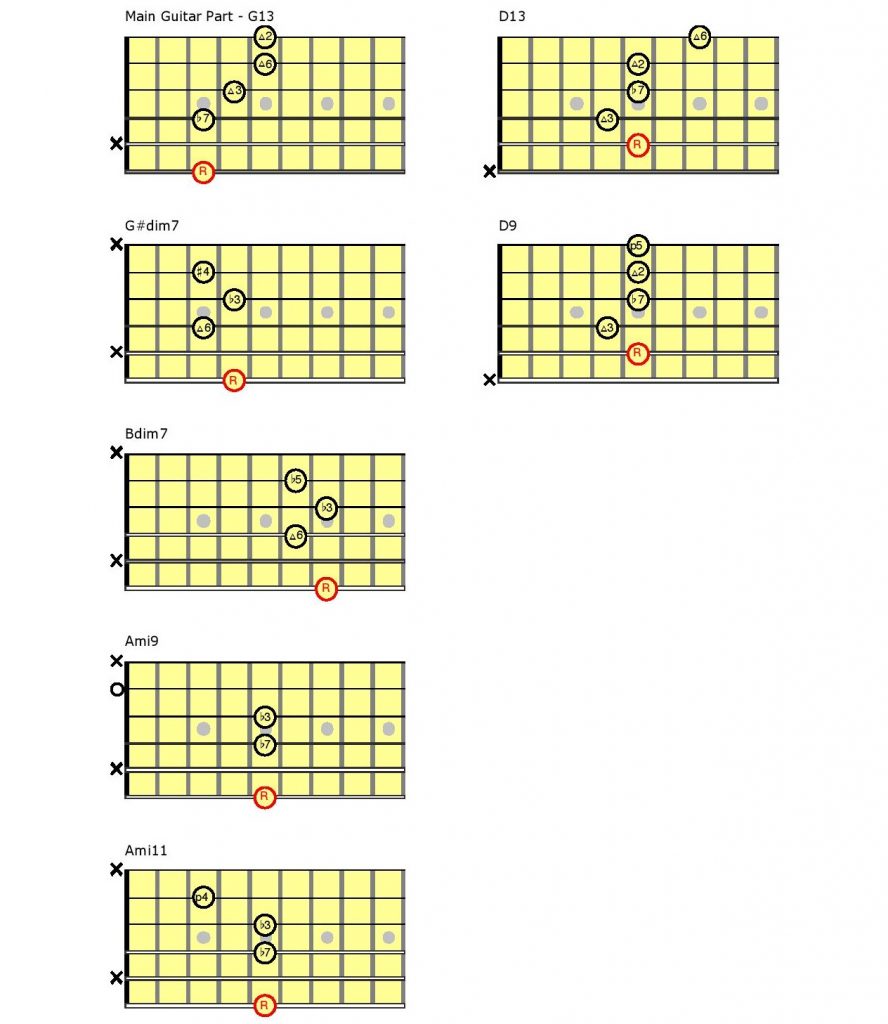
As you can see, I’ve added the thirteenth to the G7 chord, the eleventh and ninth to the Ami7 chord, and exchanged the D+ for a sweeter-sounding D13 and D9.
The Video
Here, I’m fingerpicking the first guitar part. This was done to establish the 12/8 time signature of this blues-based progression.
The second guitar part utilizes upper chord voicings to accentuate the harmony on the top four strings, as shown below.
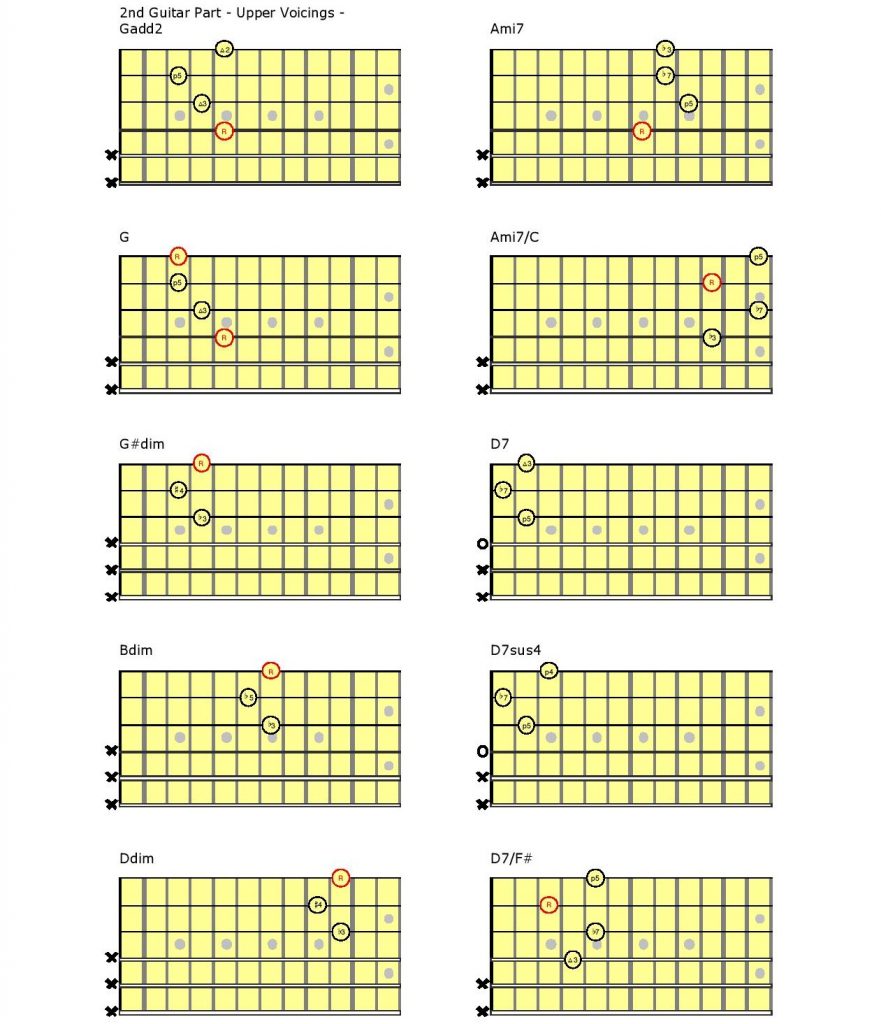
As I did in the Part 1 video, I’ve chosen to once again play double-stop chord fragments to outline the chord changes and to create a subtle melody on the top string. The specific double-stops are shown below.
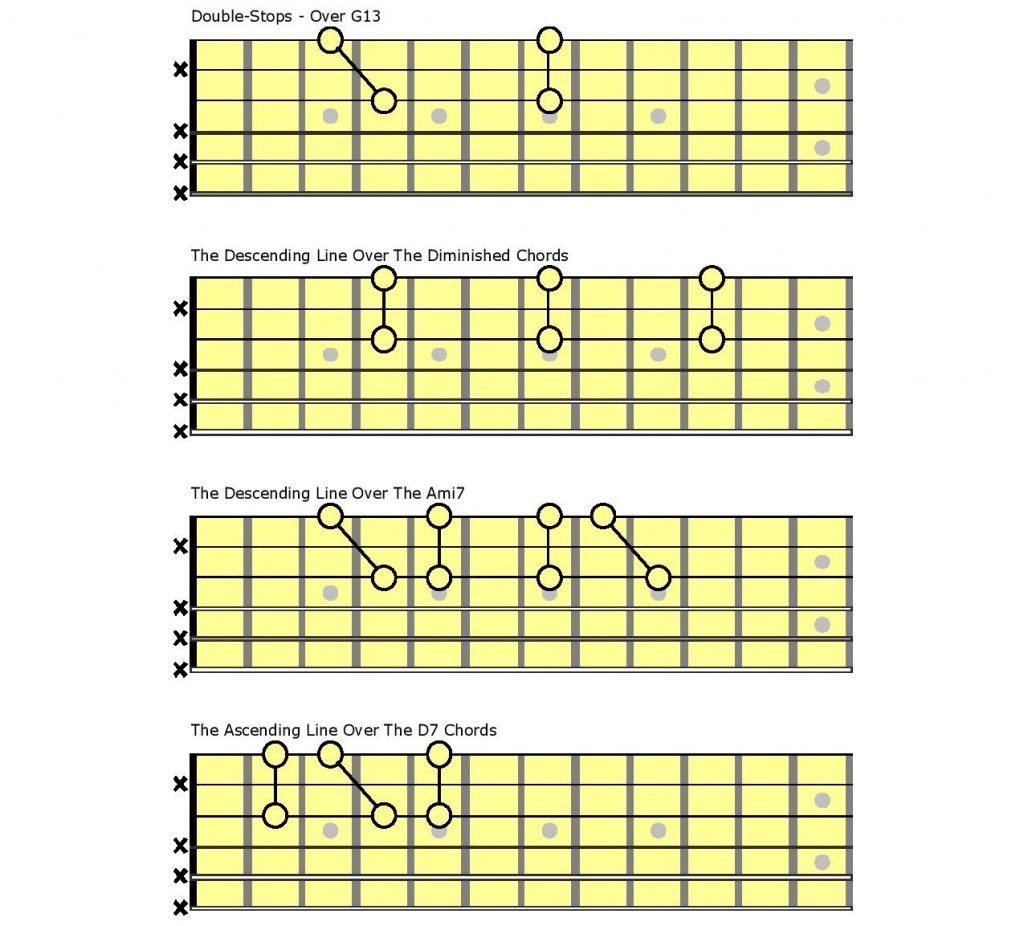
Last but not least, my lead guitar melody follows the chords with their specific arpeggios (chord tones) and some judicious use of the G and A blues scales.
The Guitar
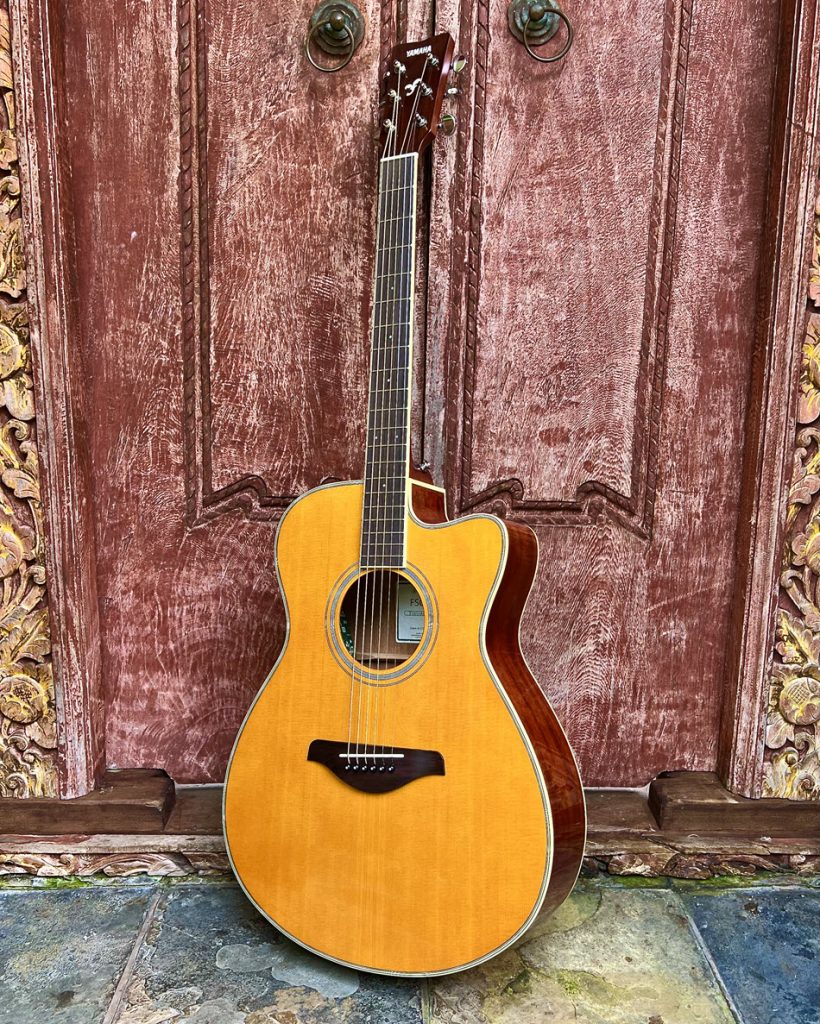
As in Part 1, I’m playing a Yamaha FSC-TA TransAcoustic guitar in this video. This instrument really does shine when it comes to recording multiple guitar parts. The neck and fingerboard are so well-balanced between acoustic and electric guitar dimensions that any style of music and technique can be articulated with absolute ease.
I used the FSC-TA’s built-in pickup to capture all the guitar parts in the video, and varied the amount of onboard hall reverb for each guitar part to retain clarity on the overdubs. I also added some extra ambience on the double-stops and single-note lines to help them stand out sonically.
The Wrap-Up
Simple chord progressions can evolve into extremely complex harmonic structures when you delve into the realm of extensions and alternate voicings. I’ve found that with careful orchestration and a clear knowledge of the possibilities, I can take even the most modest three-chord song and easily turn it into a complex and harmonically rich guitar arrangement.
And when you consider that a chord extension automatically becomes a chord tone, you’re also expanding your melodic resolution points and tasty choices when soloing and improvising. It’s like opening a doorway to a world of new musical options!
Photographs courtesy of the author.










